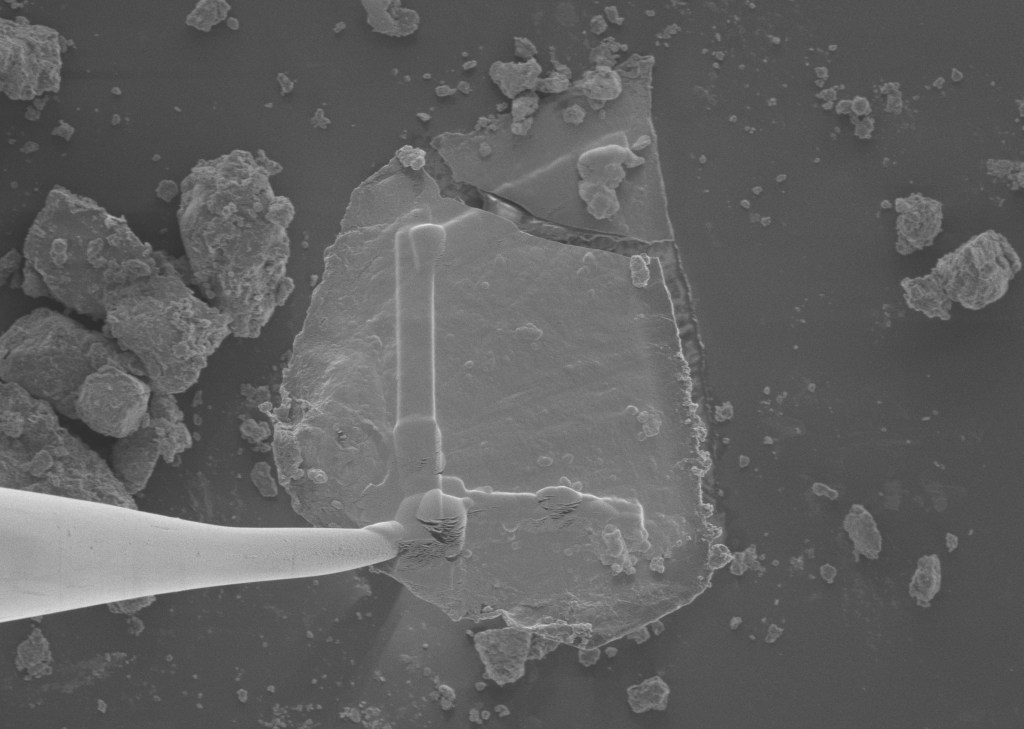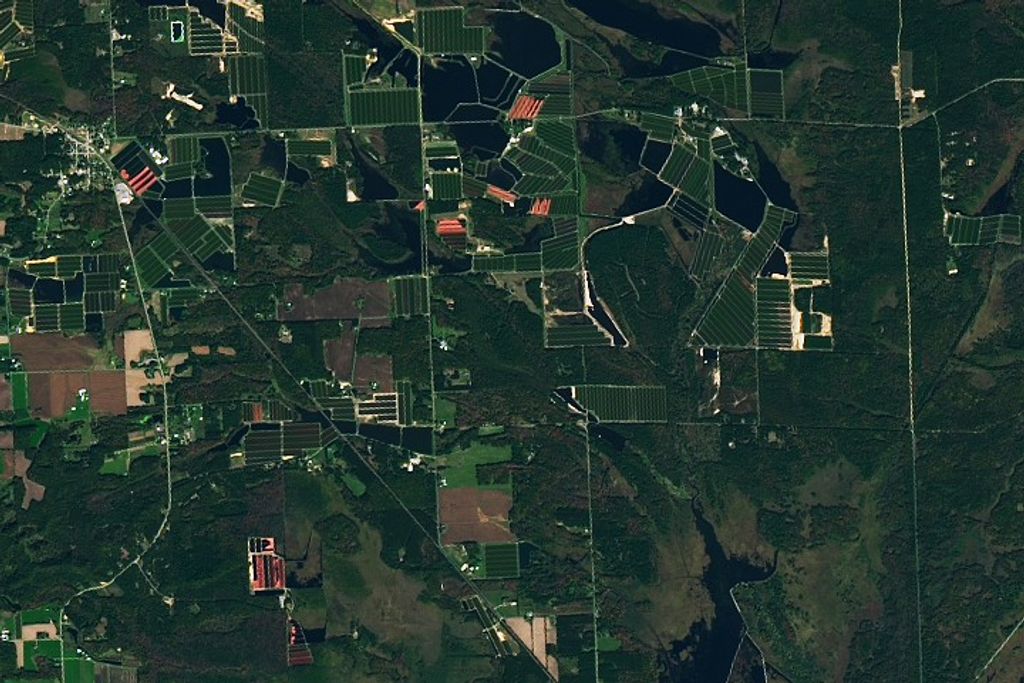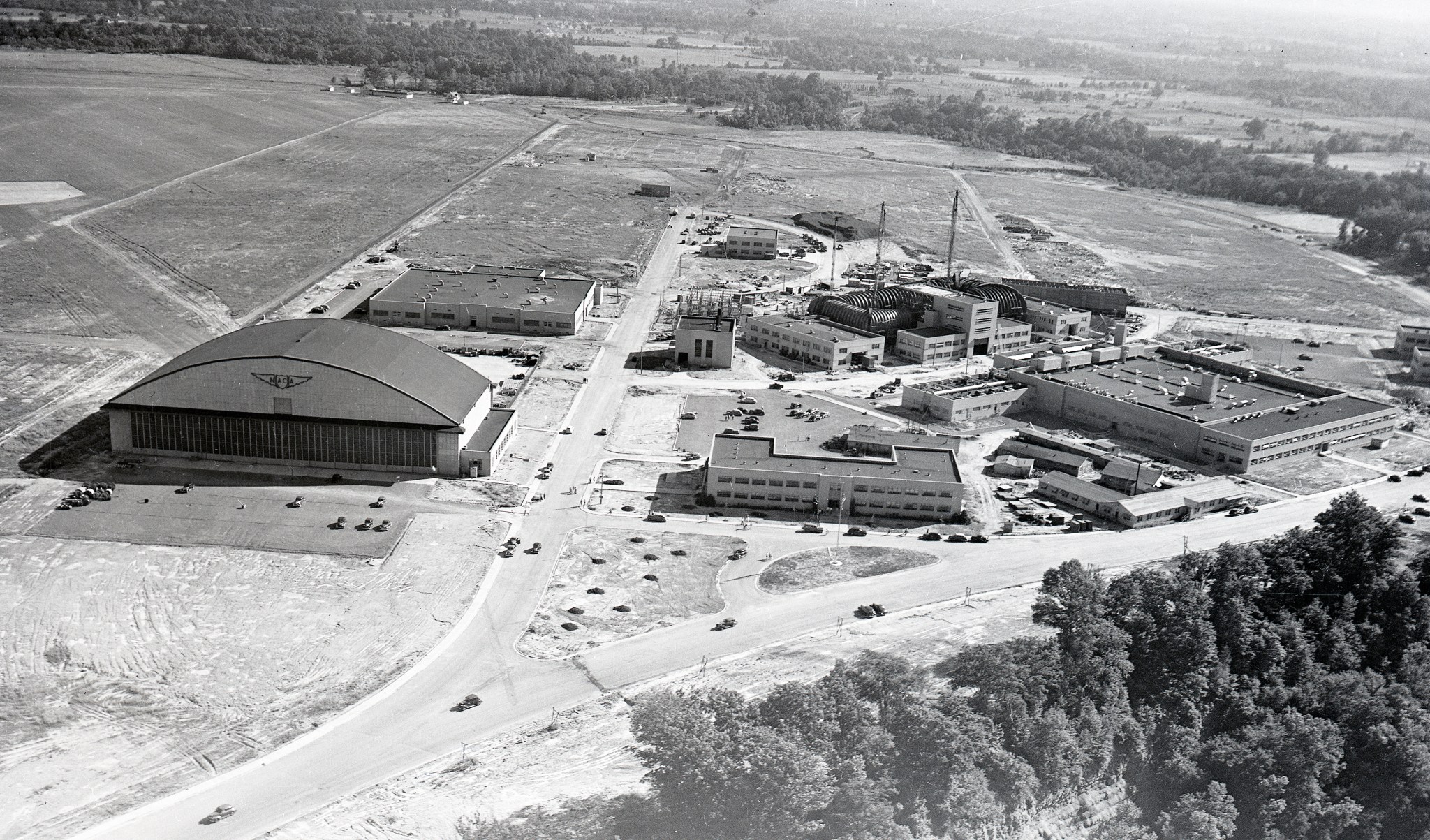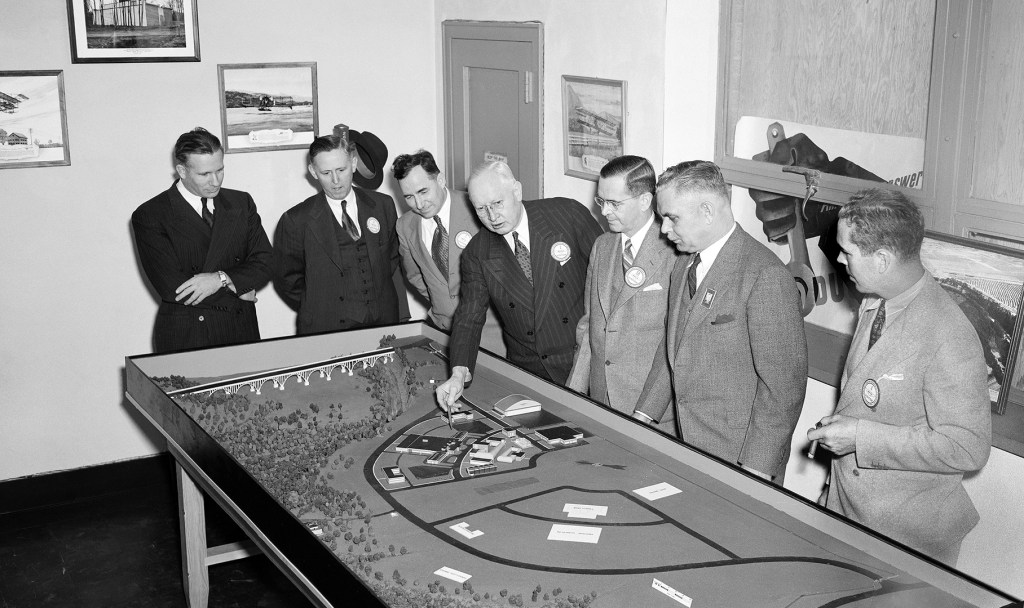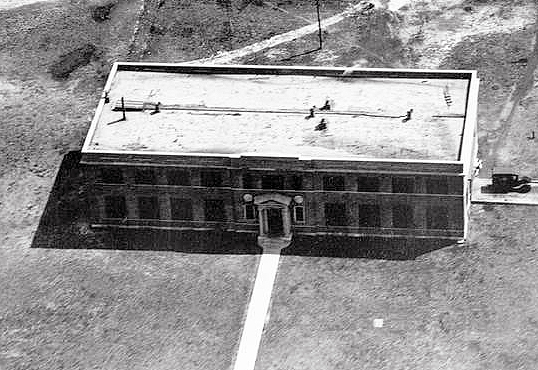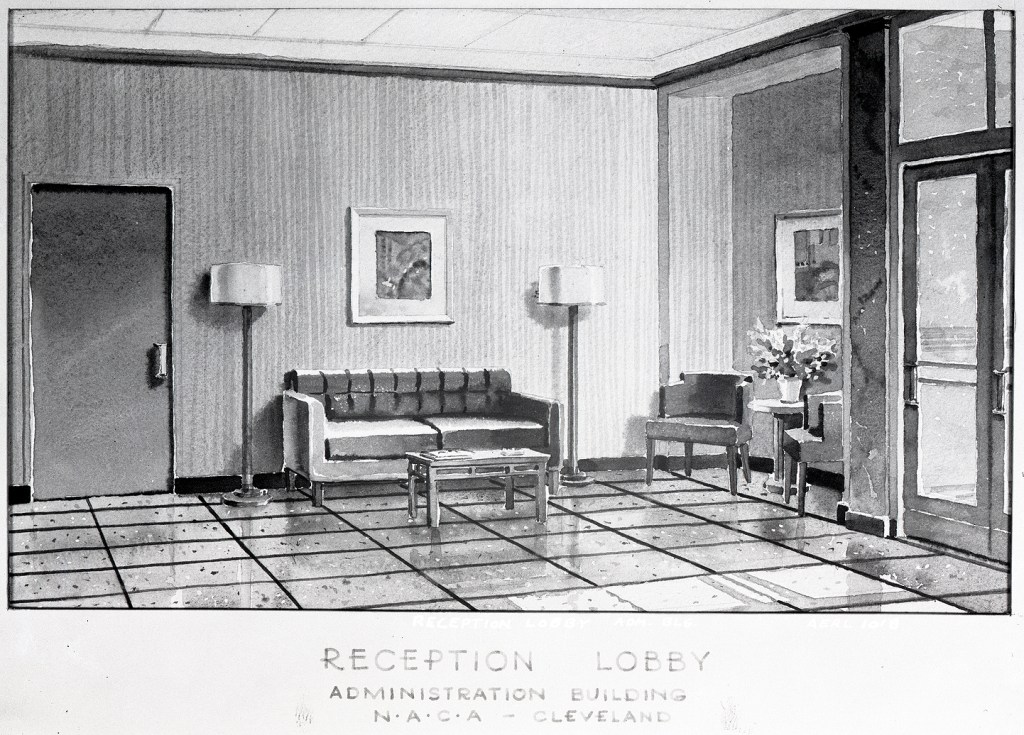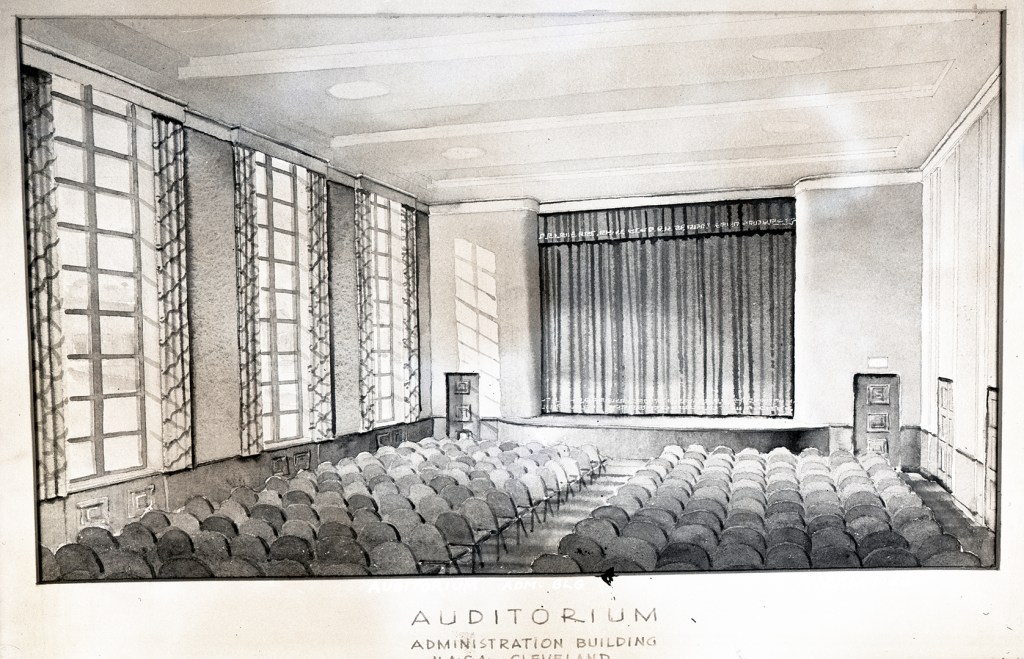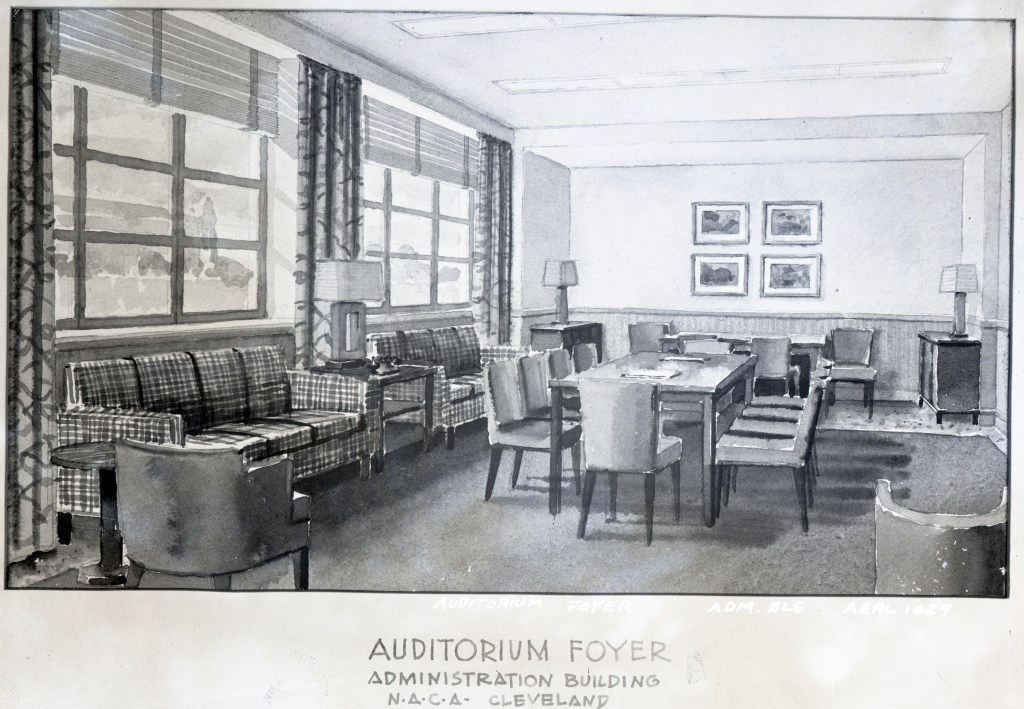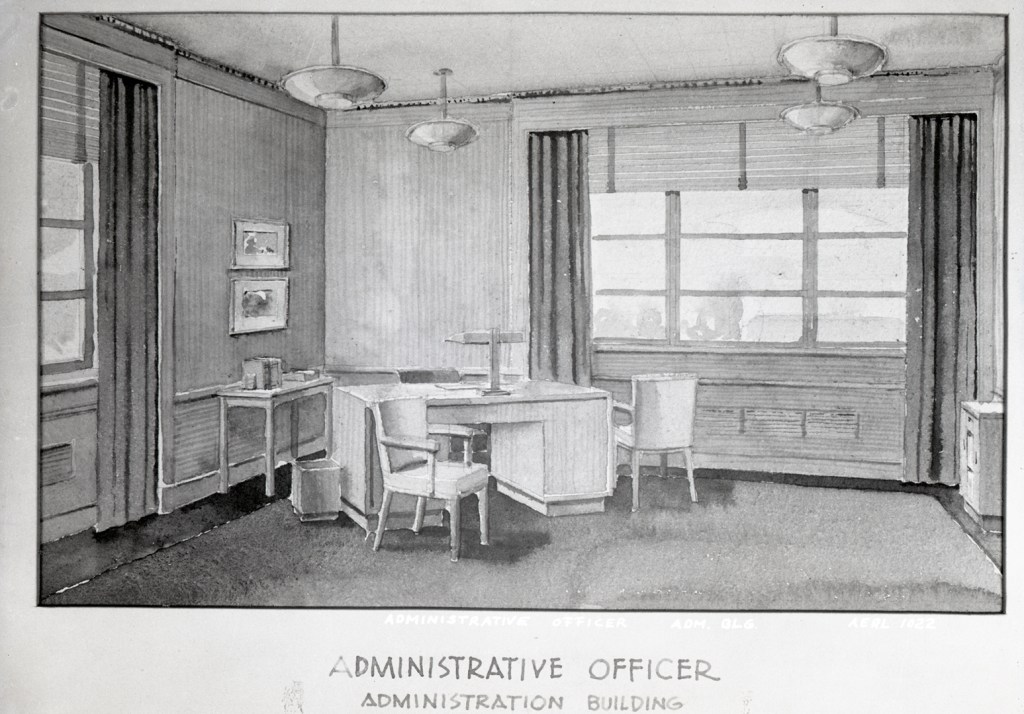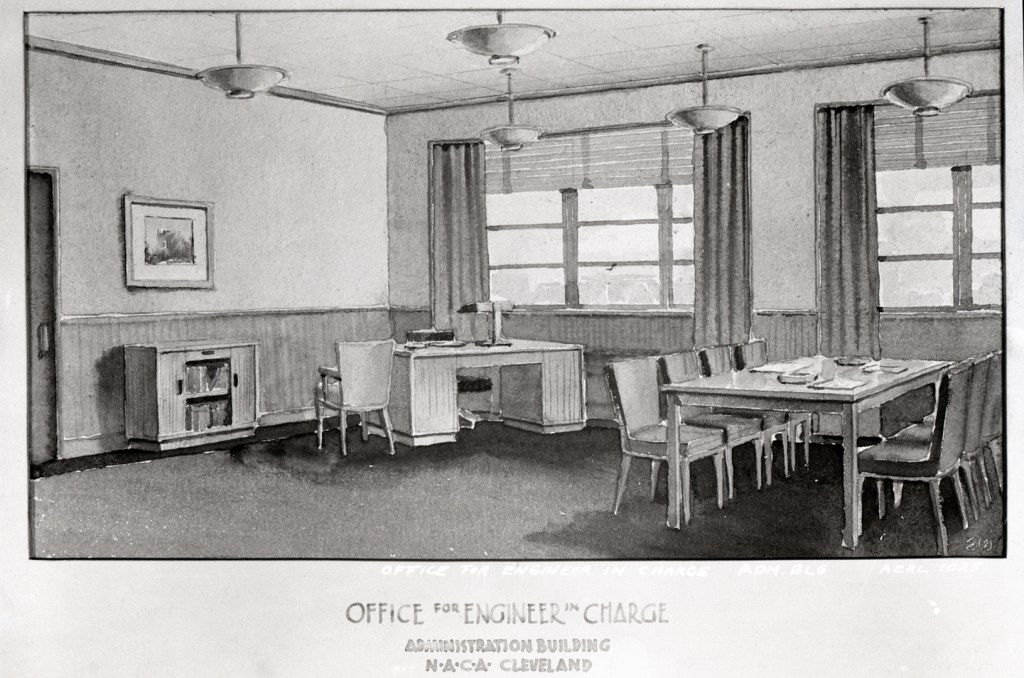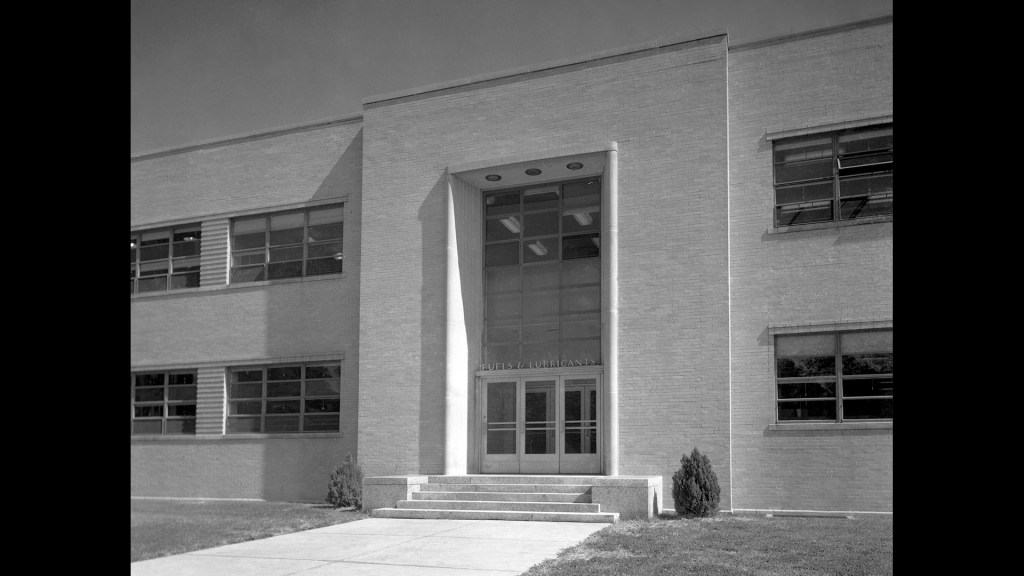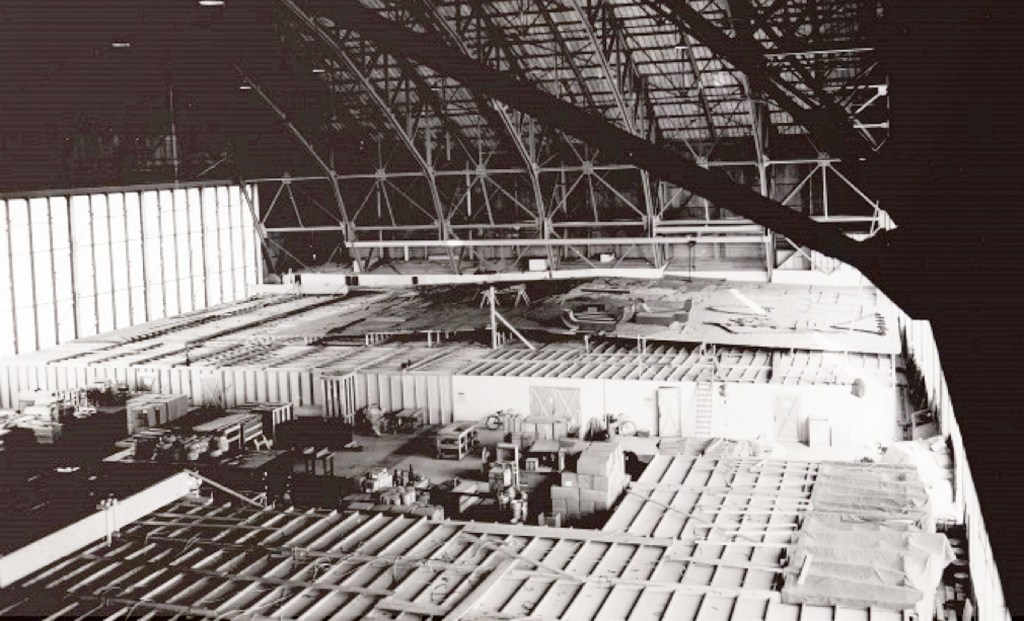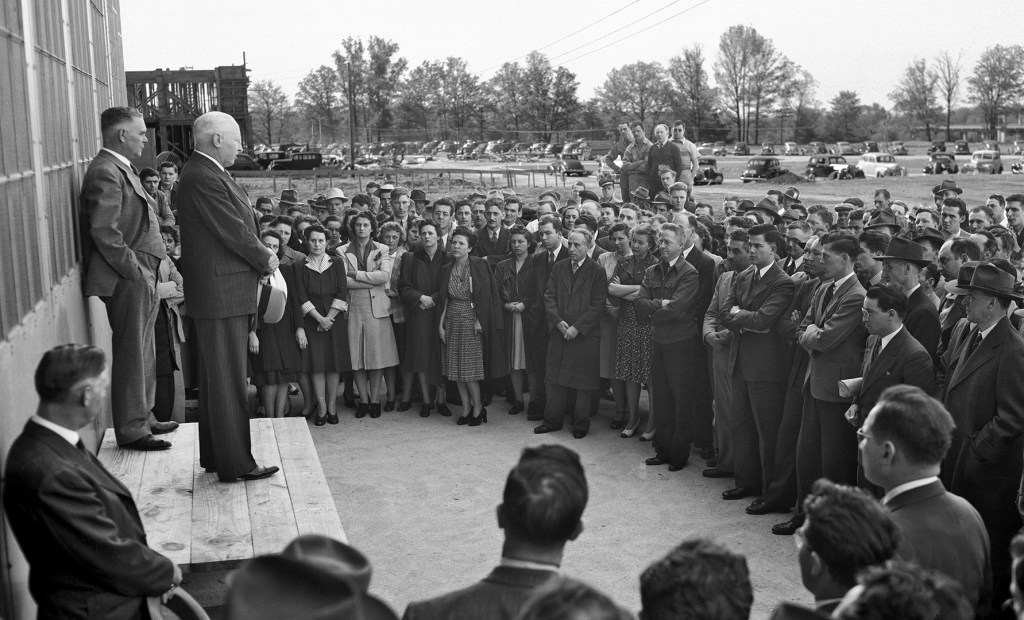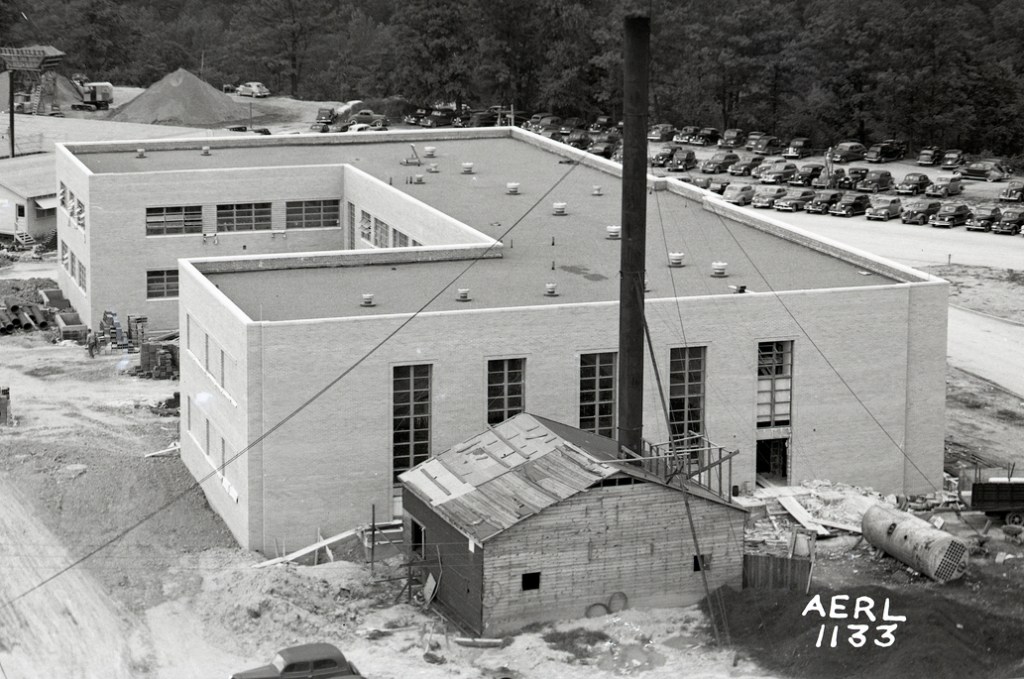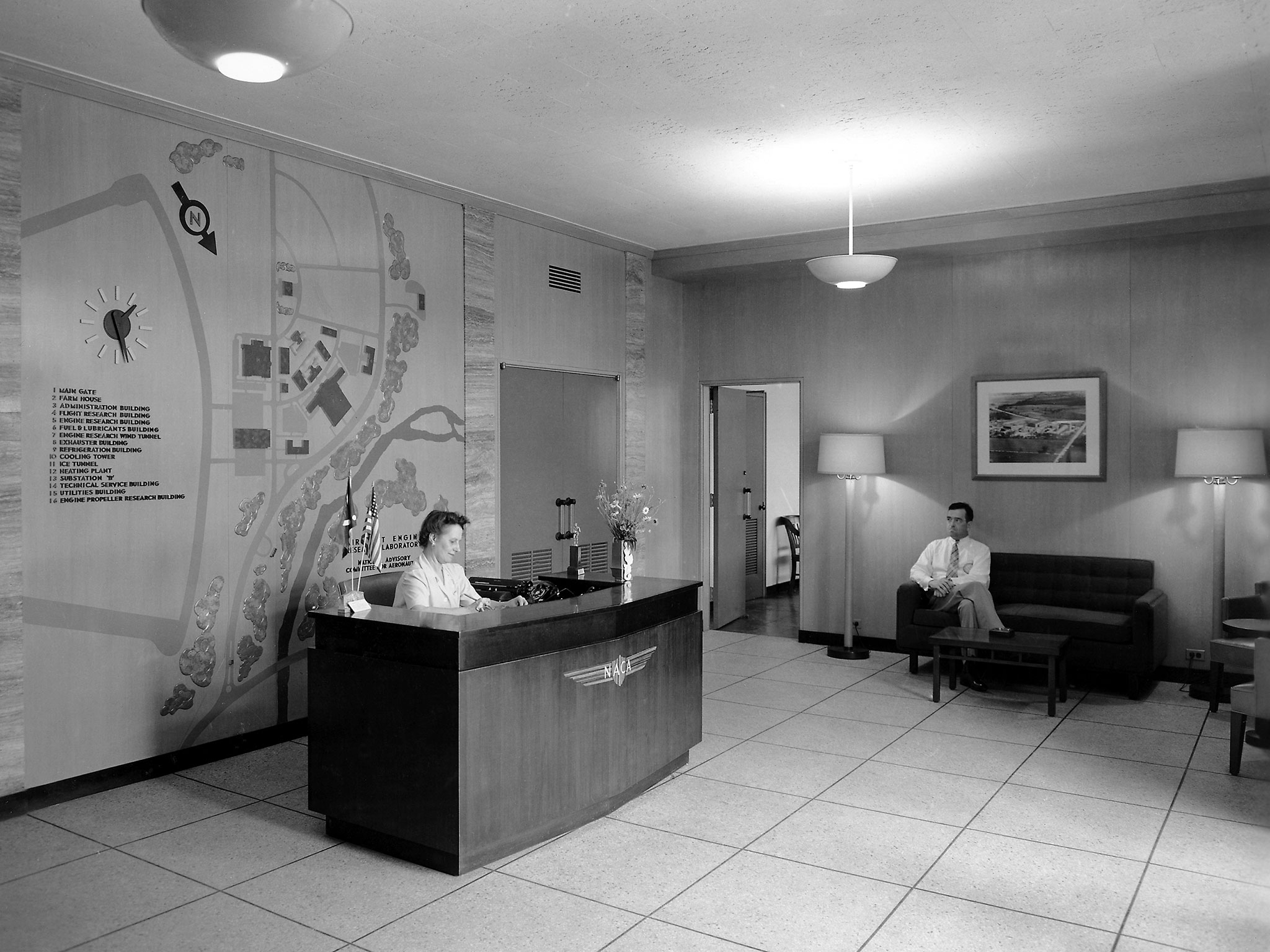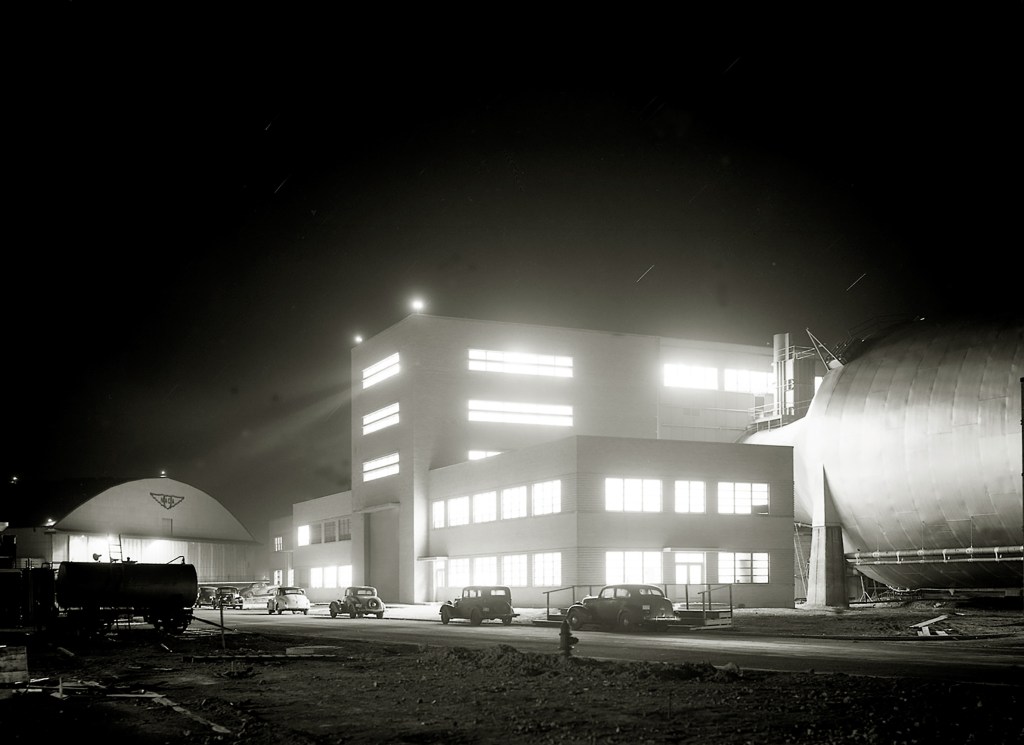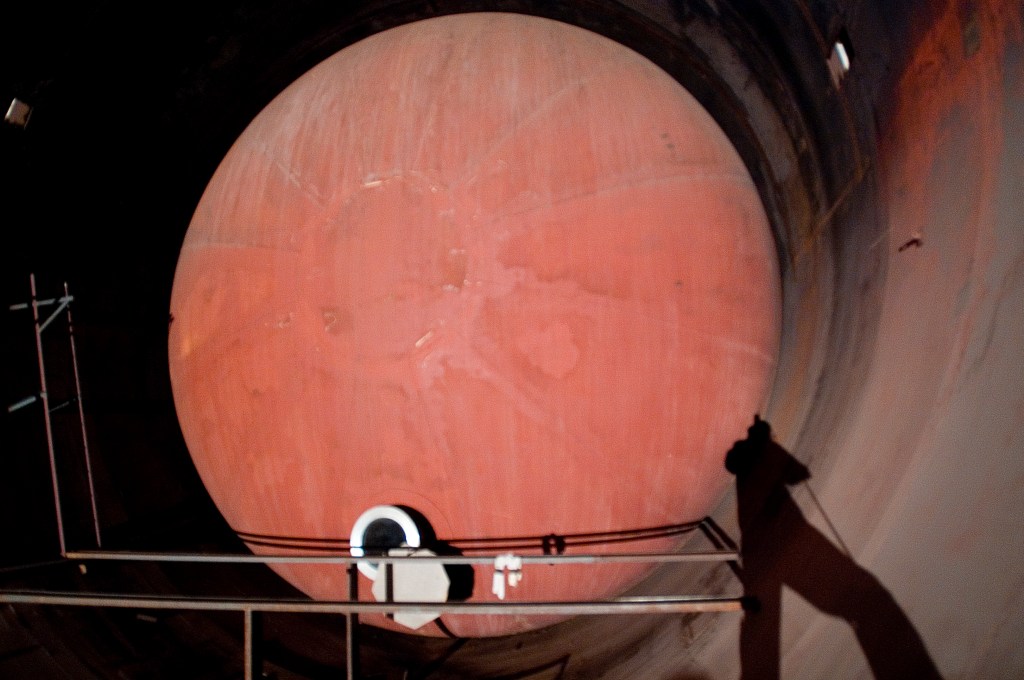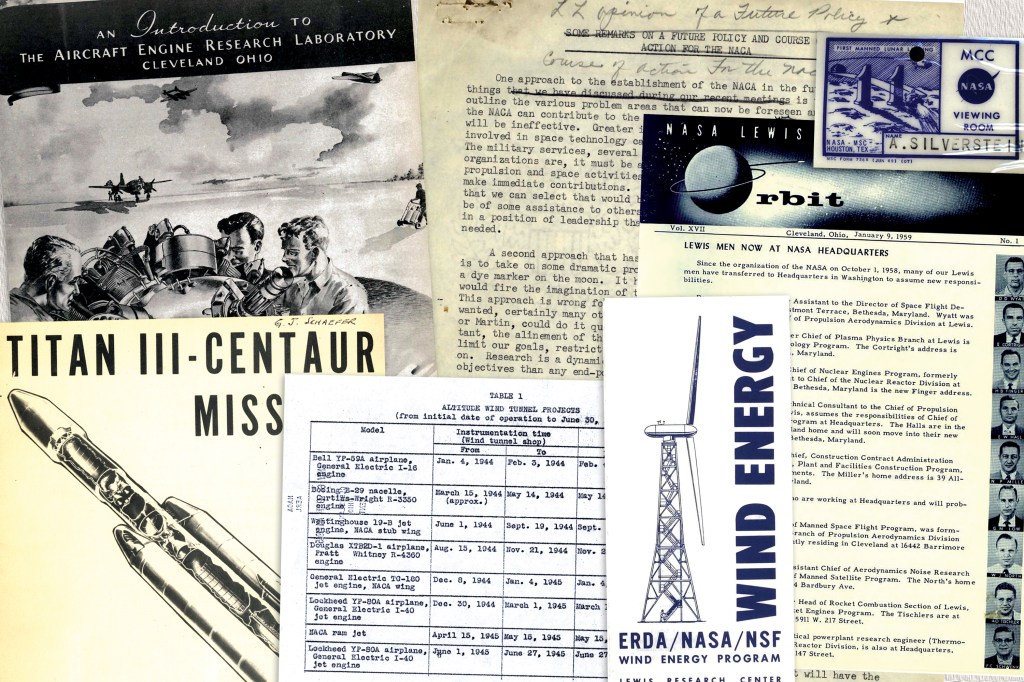NASA Glenn Research Center
Historic Facilties
Administration Building
Overview
The National Advisory Committee for Aeronautics (NACA) was an organization that coordinated the nation’s aeronautical research activities. In the late 1930s, the outbreak of World War II in Europe spurred the NACA to establish two new laboratories. In November 1940, Cleveland, Ohio was selected as the site for one of the new plants, the Aircraft Engine Research Laboratory (today known as NASA’s Glenn Research Center).
Design
Each of the three NACA laboratories had a central building to house its leadership and key administrative functions, as well as providing the laboratory with its only assembly area. The original Administration Building at Langley Memorial Aeronautical Laboratory was the laboratory’s primary structure when it began operation in 1920. It housed not only management, but also research engineers, trade shops, and a cafeteria. A new, larger Headquarters Building was constructed during World War II. Construction of the new Ames Aeronautical Laboratory in California began in late 1939 and included a two-story Administration Building that includes an annex that houses the cafeteria and auditorium. The building, completed in October 1943, remains in use today.
Planning for the AERL’s $625,000 Administration Building began almost immediately after the laboratory’s groundbreaking in January 1941. While NACA engineers were responsible for planning most of the test facilities, the Federal Works Agency’s Public Buildings Administration was used to design many of the office buildings. Blueprints indicate that Howard Lovewell Cheney, the renowned designer of numerous federal buildings, was the architect. AERL Director Raymond Sharp noted that the Federal Maritime Commission performed the Administration Building’s interior decorating.
Construction
Meanwhile the first large contingent of employees transferring from the NACA’s Langley Memorial Aeronautical Laboratory arrived in Cleveland just after the attack on Pearl Harbor in mid-December 1941. They were housed in rudimentary offices built on the floor of the hangar, the only completed building at the laboratory.
In the following weeks, the NACA contracted the Sam W. Emerson Company to construct several of the AERL’s original buildings, including the Administration Building. Construction of the Administration Building began on March 18, 1942 as the war in the Pacific raged. After a slow start in 1941, construction of the laboratory progressed quickly in 1942. As the work on the Administration Building wound down late 1942, movers brought furniture in and the AERL’s chief architect began assigning the offices to specific departments.


